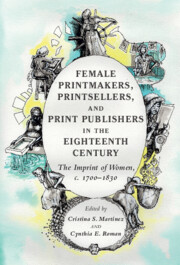287 results
THE NARRATIVES OF CICERO'S EPISTVLAE AD QVINTVM FRATREM: CAREER, REPUBLIC AND THE EPISTVLAE AD ATTICVM
-
- Journal:
- The Classical Quarterly , First View
- Published online by Cambridge University Press:
- 06 September 2024, pp. 1-19
-
- Article
-
- You have access
- HTML
- Export citation
Chapter 8 - ‘Another X’
- from Part II - Lives and Afterlives
-
-
- Book:
- Writing Literary History in the Greek and Roman World
- Published online:
- 07 June 2024
- Print publication:
- 27 June 2024, pp 167-186
-
- Chapter
- Export citation
Chapter 7 - Constructing Virgil and His Biography
- from Part II - Lives and Afterlives
-
-
- Book:
- Writing Literary History in the Greek and Roman World
- Published online:
- 07 June 2024
- Print publication:
- 27 June 2024, pp 144-166
-
- Chapter
- Export citation
Chapter 6 - From Comedy to Literary History
- from Part II - Lives and Afterlives
-
-
- Book:
- Writing Literary History in the Greek and Roman World
- Published online:
- 07 June 2024
- Print publication:
- 27 June 2024, pp 131-143
-
- Chapter
- Export citation
Chapter 1 - Writing the Beginnings of Greek Literary History
- from Part I - Between Literature and Scholarship
-
-
- Book:
- Writing Literary History in the Greek and Roman World
- Published online:
- 07 June 2024
- Print publication:
- 27 June 2024, pp 21-39
-
- Chapter
- Export citation
18 - Hybrid Forms
- from Part V - Expanding Form
-
-
- Book:
- The Cambridge Companion to Australian Poetry
- Published online:
- 06 June 2024
- Print publication:
- 13 June 2024, pp 315-333
-
- Chapter
- Export citation
From Roman Table to Anglo-Saxon Grave: An Archaeological Biography of the Scremby Cup
-
- Journal:
- European Journal of Archaeology , First View
- Published online by Cambridge University Press:
- 30 May 2024, pp. 1-19
-
- Article
-
- You have access
- HTML
- Export citation
Chapter 1 - The Life
- from Part I - Life and Times
-
-
- Book:
- Goethe in Context
- Published online:
- 16 May 2024
- Print publication:
- 23 May 2024, pp 9-19
-
- Chapter
- Export citation
12 - Expressing Attitudes in Ancient Chinese History
-
-
- Book:
- The Discourse of History
- Published online:
- 16 May 2024
- Print publication:
- 23 May 2024, pp 300-321
-
- Chapter
- Export citation
9 - Celebrity Bodies
- from Part II - Black Optics
-
-
- Book:
- The Cambridge Companion to the Black Body in American Literature
- Published online:
- 09 May 2024
- Print publication:
- 16 May 2024, pp 128-144
-
- Chapter
- Export citation
Chapter 23 - Correspondence
- from Part IV - Genres
-
-
- Book:
- Jonathan Swift in Context
- Published online:
- 02 May 2024
- Print publication:
- 09 May 2024, pp 181-189
-
- Chapter
- Export citation
Chapter 18 - Familiar Verse
- from Part IV - Genres
-
-
- Book:
- Jonathan Swift in Context
- Published online:
- 02 May 2024
- Print publication:
- 09 May 2024, pp 139-147
-
- Chapter
- Export citation
Chapter 1 - Biography
- from Part I - Personal
-
-
- Book:
- Jonathan Swift in Context
- Published online:
- 02 May 2024
- Print publication:
- 09 May 2024, pp 3-9
-
- Chapter
- Export citation
Chapter 2 - Friends and Family
- from Part I - Personal
-
-
- Book:
- Jonathan Swift in Context
- Published online:
- 02 May 2024
- Print publication:
- 09 May 2024, pp 10-17
-
- Chapter
- Export citation
Chapter 2 - Personality
- from Part I - Biography, People, Places
-
-
- Book:
- Vaughan Williams in Context
- Published online:
- 28 March 2024
- Print publication:
- 04 April 2024, pp 19-26
-
- Chapter
- Export citation

Female Printmakers, Printsellers, and Print Publishers in the Eighteenth Century
- The Imprint of Women, c. 1700–1830
-
- Published online:
- 14 March 2024
- Print publication:
- 21 March 2024
I.32 - Asser, The Achievements of King Alfred
- from Ninth Century
-
- Book:
- The Cambridge Anthology of British Medieval Latin
- Published online:
- 11 January 2024
- Print publication:
- 01 February 2024, pp 343-362
-
- Chapter
- Export citation
2 - Research on Wilhelm von Humboldt and His Brother Alexander as Americanist Linguists
- from Part I - Wilhelm von Humboldt and the Americas
-
- Book:
- Wilhelm von Humboldt and Early American Linguistics
- Published online:
- 11 January 2024
- Print publication:
- 01 February 2024, pp 26-44
-
- Chapter
- Export citation
II.8 - Eadmer, The Life of Archbishop Anselm
- from Twelfth Century
-
- Book:
- The Cambridge Anthology of British Medieval Latin
- Published online:
- 11 January 2024
- Print publication:
- 01 February 2024, pp 95-99
-
- Chapter
- Export citation
Which Sage Should I Follow (去宗哪個聖人)? Neo-Confucian Problems with Tradition in Sixteenth-Century Ming China
-
- Journal:
- Journal of Chinese History , First View
- Published online by Cambridge University Press:
- 25 January 2024, pp. 1-24
-
- Article
-
- You have access
- Open access
- HTML
- Export citation

